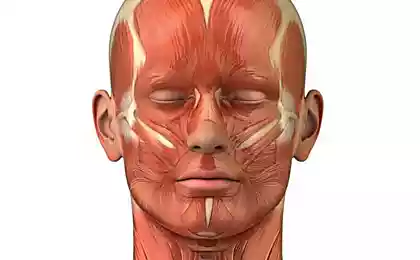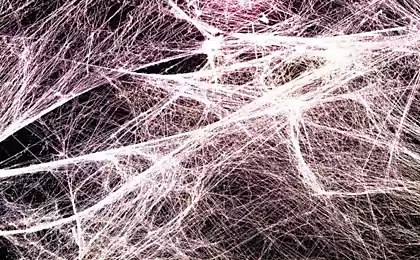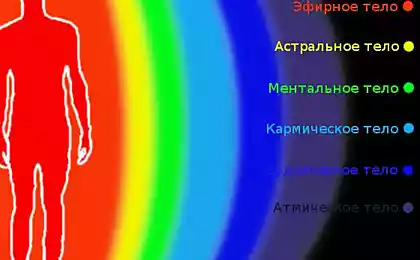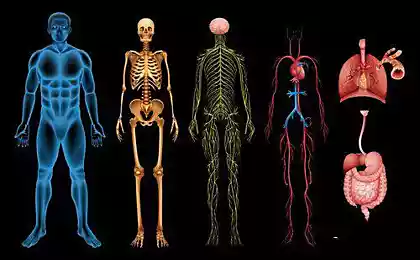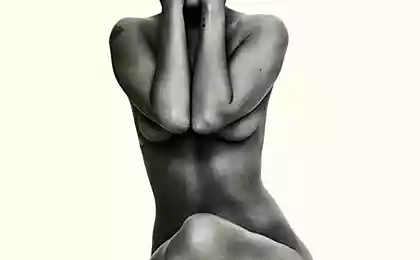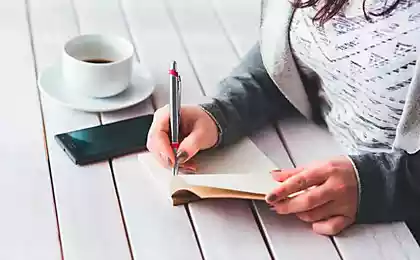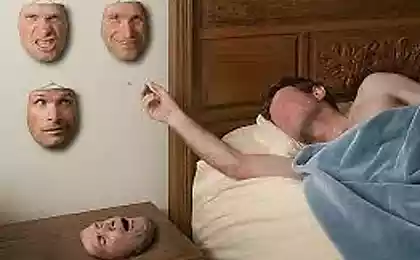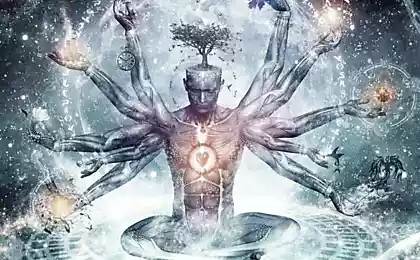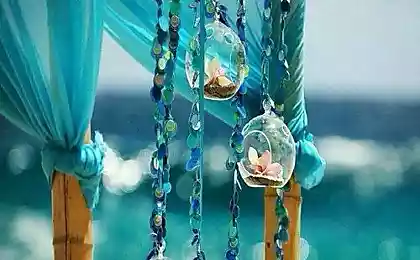580
Fascia — the "secret" on your body
Cinderella soft tissue
Fascia. Gwyneth Paltrow at the end of last year, spoke of her as "the secret organ" and although it (the fascia) are well known in the world of manual therapy, in a way Gwyneth was right.
For many years, because fascia is everywhere, it was considered unnecessary. Anatomists have tried to completely remove it in order to get a better overview of the "important" things (muscles, organs, arteries, nerves, etc.), and as a result, the dead bodies resembled a neat and clear picture of anatomical texts.
Even in a fairly modern textbooks of anatomy, the fascia is referred to minimal, and the images mostly show the skeletal-muscular system consisting of separate "parts", each of which has its own fixing points and their action.
Seventy eight million eight hundred sixteen thousand five hundred four
So, although I'm not saying that this is so (the biceps, for example, during a contraction really flexes the elbow (among other things)), all of the body and its movements are not so simple. You — not the car, not the sum of its parts, You dynamic moving body, which need to be considered and treated as a whole.
Last year I attended a day of preparation, Caroline barrow (College of Science of the Body), and what most struck me is how totally and completely intertwined our muscles.
The idea of defined and separated muscles, with separate attachment points, which we studied in school, was a complete farce. Thomas Meyer (Anatomical Trains) described the musculoskeletal system as one "arm" attached in different places with the help of fascia, and from what I have seen, I judge that he could be right.
WHAT IS FASCIA?
Essentially fascia is connective tissue that consists of collagen, elastic and "mucoid" substance (water content in it is 70%). Fascia comes in various weights, running from the fascia as soft as cotton candy, to the fascia is tough and fibrous like fiber.
Tendons, ligaments, periosteum (around the bone), epimysium (surrounds the whole muscle), perimysium (surrounds groups of muscle fibers, combining them into bundles), endomysium (surrounds individual muscle fibers), capsules of joints and membranes surrounding the organs, the nerves, the brain and spinal cord – all system fascia. It is described as a three-dimensional stocking that surrounds every structure of the body. John Upledger explains that fascia is "a maze which allows travel from one place in the body to any other without ever leaving the fascia".
The individual names we give these structures suggest that they are different, but in fact they are part of a single system, which Thomas mayor calls a system of biomechanical regulation. the tension of the tissue.
Therefore, the restriction in one part of the fascial system will affect all other parts of the system to a greater or lesser extent. A simple way to demonstrate it: pull and twist a small piece of tissue, such as Your t-shirt, and see how from twisting lines diverge (pain) in different directions from the primary constraint.
Seventy six million sixty four thousand six hundred forty seven
FASCIAL RESTRICTION
Why is fascia important?
The fascia is the fabric that holds us together and allows to transmit forces throughout the body as a whole. Idea called Tensegrity (or biotensegrity), the name is derived from the English. "tention integrity", explains how lightweight materials can create strong stability, if they are closely integrated.
We grew up with the idea that we keep our bones, and it kind of makes sense: they are dense, somewhat hard; but try to put with each other a few bones, and they just fall. Good visualization of Tensegrity is the imagination of the tents: if tents stretching (connective tissue) does not create a sufficient tension of the tent poles (bones), and the whole tent as a whole will collapse.
So the tension is distributed in the system, but if in any place there is excess voltage, the structure is broken at its weakest point. With non-specific lower back pain, for example, according to one theory, the problem is not necessarily associated with the structures that make up the back, this is the weakest point in the system, so the pain is felt here.
Your fascia is 10 times more sensory nerve endings than muscle, so it plays a major role in proprioception (the concept about how we learn, where and how is our body not looking at him), it is assumed that most soft tissue injuries in fact – it injuries the connective tissue and not muscle damage.
Also, as Your muscles will change and grow if You train them, Your fascia also responds to the action of mechanical forces:
Sit, hunched over, pull the head forward and look long enough at the computer monitor, and Your body will "help" You, using more of the fascia to maintain this position. More fascia = more stiffness, more stiffness = less traffic, less traffic = more fascia. I think You guessed where I'm going. Modern diagnostic technology showed that people with non-specific lumbar pain thoracolumbalis there is a thickening of the fascia (lumbar fascia) that may cause them pain.
Seventy seven million nine hundred thirty eight thousand one hundred eighty six
LOVE YOUR FASCIA
Move more often
I'm not talking about the shock workout in the gym or "development," but just about as much as possible the movement of the body. We all have lives/jobs/commitments, including a move where I can. Take a walk during your lunch break, stand up and stretch while talking on the phone, do the daily prophetic a little less convenient for yourself – get out a stop early from the bus/Park away from the exit, even a simple wiggle while sitting helps.
Move functionally
You are a human being that has evolved for thousands of years to stand, walk, run, jump, ride, climb, hang, and carry things. Contact your inner child, play with movement and fun ride.
Get massage
There are several theories on how manual therapy can release restrictions in the fascia. Personally my favorite made by Robert Slobom, which focuses on the mechanoreceptors found in fascia, and how closely connected the fascial system and the autonomic nervous system, leading to changes in fascial tonus and ground substance viscosity. If the restrictions in the fascia cause pain and dysfunction, then the release limits should lead to the return of the function.
As invisible to the eye psoas muscle affects the whole bodyThe liver is the Queen of emotionsStretching of the fascia
The slow slide while stretching, hold the position for a few minutes, and again slow slip is fascial stretching.
"Movement, harmonious activity, free flow of body fluids, the free transmission of nerve impulses, and full range of motion of muscles and joints – all United for health and life. When movement ceases, life is ended".published
Translation of the article Jemma Fordham "Fascia – we're better connected", 2015 .
Source: ommeera.com.ua/fastsiya-soedinitelnye-tkani/
Fascia. Gwyneth Paltrow at the end of last year, spoke of her as "the secret organ" and although it (the fascia) are well known in the world of manual therapy, in a way Gwyneth was right.
For many years, because fascia is everywhere, it was considered unnecessary. Anatomists have tried to completely remove it in order to get a better overview of the "important" things (muscles, organs, arteries, nerves, etc.), and as a result, the dead bodies resembled a neat and clear picture of anatomical texts.
Even in a fairly modern textbooks of anatomy, the fascia is referred to minimal, and the images mostly show the skeletal-muscular system consisting of separate "parts", each of which has its own fixing points and their action.
Seventy eight million eight hundred sixteen thousand five hundred four
So, although I'm not saying that this is so (the biceps, for example, during a contraction really flexes the elbow (among other things)), all of the body and its movements are not so simple. You — not the car, not the sum of its parts, You dynamic moving body, which need to be considered and treated as a whole.
Last year I attended a day of preparation, Caroline barrow (College of Science of the Body), and what most struck me is how totally and completely intertwined our muscles.
The idea of defined and separated muscles, with separate attachment points, which we studied in school, was a complete farce. Thomas Meyer (Anatomical Trains) described the musculoskeletal system as one "arm" attached in different places with the help of fascia, and from what I have seen, I judge that he could be right.
WHAT IS FASCIA?
Essentially fascia is connective tissue that consists of collagen, elastic and "mucoid" substance (water content in it is 70%). Fascia comes in various weights, running from the fascia as soft as cotton candy, to the fascia is tough and fibrous like fiber.
Tendons, ligaments, periosteum (around the bone), epimysium (surrounds the whole muscle), perimysium (surrounds groups of muscle fibers, combining them into bundles), endomysium (surrounds individual muscle fibers), capsules of joints and membranes surrounding the organs, the nerves, the brain and spinal cord – all system fascia. It is described as a three-dimensional stocking that surrounds every structure of the body. John Upledger explains that fascia is "a maze which allows travel from one place in the body to any other without ever leaving the fascia".
The individual names we give these structures suggest that they are different, but in fact they are part of a single system, which Thomas mayor calls a system of biomechanical regulation. the tension of the tissue.
Therefore, the restriction in one part of the fascial system will affect all other parts of the system to a greater or lesser extent. A simple way to demonstrate it: pull and twist a small piece of tissue, such as Your t-shirt, and see how from twisting lines diverge (pain) in different directions from the primary constraint.
Seventy six million sixty four thousand six hundred forty seven
FASCIAL RESTRICTION
Why is fascia important?
The fascia is the fabric that holds us together and allows to transmit forces throughout the body as a whole. Idea called Tensegrity (or biotensegrity), the name is derived from the English. "tention integrity", explains how lightweight materials can create strong stability, if they are closely integrated.
We grew up with the idea that we keep our bones, and it kind of makes sense: they are dense, somewhat hard; but try to put with each other a few bones, and they just fall. Good visualization of Tensegrity is the imagination of the tents: if tents stretching (connective tissue) does not create a sufficient tension of the tent poles (bones), and the whole tent as a whole will collapse.
So the tension is distributed in the system, but if in any place there is excess voltage, the structure is broken at its weakest point. With non-specific lower back pain, for example, according to one theory, the problem is not necessarily associated with the structures that make up the back, this is the weakest point in the system, so the pain is felt here.
Your fascia is 10 times more sensory nerve endings than muscle, so it plays a major role in proprioception (the concept about how we learn, where and how is our body not looking at him), it is assumed that most soft tissue injuries in fact – it injuries the connective tissue and not muscle damage.
Also, as Your muscles will change and grow if You train them, Your fascia also responds to the action of mechanical forces:
- Postural patterns (posture and posture);
- Patterns of emotional holding;
- Physical injury.
Sit, hunched over, pull the head forward and look long enough at the computer monitor, and Your body will "help" You, using more of the fascia to maintain this position. More fascia = more stiffness, more stiffness = less traffic, less traffic = more fascia. I think You guessed where I'm going. Modern diagnostic technology showed that people with non-specific lumbar pain thoracolumbalis there is a thickening of the fascia (lumbar fascia) that may cause them pain.
Seventy seven million nine hundred thirty eight thousand one hundred eighty six
LOVE YOUR FASCIA
Move more often
I'm not talking about the shock workout in the gym or "development," but just about as much as possible the movement of the body. We all have lives/jobs/commitments, including a move where I can. Take a walk during your lunch break, stand up and stretch while talking on the phone, do the daily prophetic a little less convenient for yourself – get out a stop early from the bus/Park away from the exit, even a simple wiggle while sitting helps.
Move functionally
You are a human being that has evolved for thousands of years to stand, walk, run, jump, ride, climb, hang, and carry things. Contact your inner child, play with movement and fun ride.
Get massage
There are several theories on how manual therapy can release restrictions in the fascia. Personally my favorite made by Robert Slobom, which focuses on the mechanoreceptors found in fascia, and how closely connected the fascial system and the autonomic nervous system, leading to changes in fascial tonus and ground substance viscosity. If the restrictions in the fascia cause pain and dysfunction, then the release limits should lead to the return of the function.
As invisible to the eye psoas muscle affects the whole bodyThe liver is the Queen of emotionsStretching of the fascia
The slow slide while stretching, hold the position for a few minutes, and again slow slip is fascial stretching.
"Movement, harmonious activity, free flow of body fluids, the free transmission of nerve impulses, and full range of motion of muscles and joints – all United for health and life. When movement ceases, life is ended".published
Translation of the article Jemma Fordham "Fascia – we're better connected", 2015 .
Source: ommeera.com.ua/fastsiya-soedinitelnye-tkani/
10 ways to look at LIFE from the OTHER side
Yuna Moritz: the juvenile justice system of the West – war with virgin

